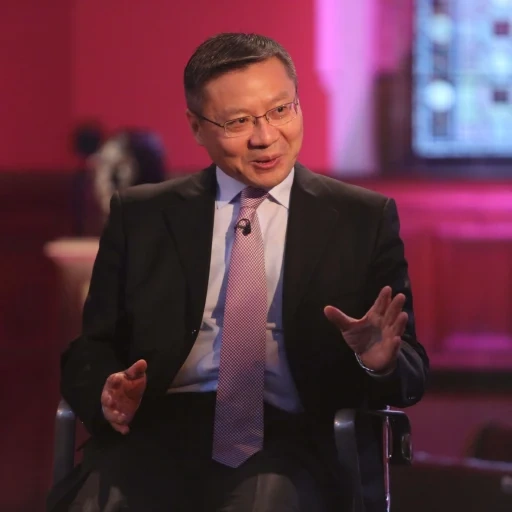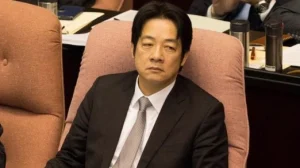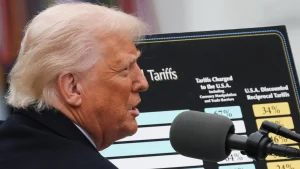The Fourth Wave is Here
In 2017, at the Nexus Conference in the Netherlands, I had a sharp conversation with French philosopher Bernard-Henri Lévy. He accused China of large-scale human rights violations, and I suggested he take a look at the latest Ipsos poll, where 90% of Chinese respondents believed their country was on the right track, compared to only 11% in France. I asked him if he had considered that such a high proportion of dissatisfied French people might have their dissatisfaction tied to issues of human rights in France.
I said that the French intellectual community should have the courage, like the French Enlightenment thinker Voltaire did in his time, to study China’s successful experiences. Lévy, visibly displeased, responded, “How can a scholar from an authoritarian country invoke our philosopher Voltaire to criticize French democracy?” I told him that I had read Voltaire’s works in the original French. At that time, Europe was 100% authoritarian, and in his view, China was the best-governed country in the world.
Looking back at the history of cultural exchanges between China and the West, there have generally been four waves of “westward transmission of Chinese learning”, which refers to the spread of Chinese knowledge and scholarship to the Western world.
The first wave, represented by European Enlightenment thinkers like Voltaire, lasted particularly long from the 16th to 18th centuries. However, if we broaden our perspective further, its origins can be traced back to the turn of the 13th and 14th centuries, when the publication of The Travels of Marco Polo ignited a prolonged “Oriental fever” and “China craze” that propelled Europe into the Age of Discovery in the 15th century. Numerous European adventurers and navigators, such as Christopher Columbus and Vasco da Gama, set sail in search of the developed Eastern world. Goods and knowledge from China contributed to the Enlightenment movement and the Industrial Revolution in Europe.
This protracted process of “westward transmission of Chinese learning” unfolded in parallel with Europe’s emergence from the medieval era and the Reformation, against the backdrop of a “crisis in the European mind.” Through their engagement with the East, Europeans discovered a secularized new world—one they perceived as a “natural state” built on rational principles, starkly contrasting with their own “religious states.” Jesuit missionaries such as Matteo Ricci and Nicolas Trigault introduced Confucian classics to Europe during this period, sparking intense interest among Enlightenment thinkers like Voltaire, Leibniz, and Diderot.
In Voltaire’s view, the Enlightenment created rationalism and humanism, and his source of inspiration was none other than Confucius. Using his knowledge of Chinese learning, he launched fierce attacks against religious fanaticism, theocratic regimes, and monarchical absolutism prevalent in Europe at the time. While Westerners today credit Voltaire for “teaching us to be free,” one of the intellectual roots of his philosophy was in fact Confucius’ human-centered philosophy. At its core, the European Enlightenment represented a shift from a theocentrism worldview to “anthropocentrism”. Undoubtedly, this wave of “westward transmission of Chinese learning” promoted Europe’s awakening.
The second wave of “westward transmission of Chinese learning” roughly began in the early 20th century and lasted until after World War I. The horrific World War led many insightful Westerners to reflect on the shortcomings of Western culture. French writer Romain Rolland called on the West to “listen to the voices of Eastern philosophers.” British philosopher Bertrand Russell and American philosopher John Dewey, among others, visited China after the war. Russell believed that Western culture had fallen into a deep crisis. He was disgusted by Westerners bullying and invading China with a sense of superiority and had high hopes for “Young China,” hoping that China would quickly achieve national independence and modernization and combine certain excellent qualities of Chinese civilization, especially Taoism in his eyes, that “producing without possessing, acting without taking credit, and nurturing without dominating,” with the vitality of Western civilization to create a new human civilization that is both effective, vibrant, and peaceful and gentle.
In this great wave, Chinese scholars such as Liang Qichao also went abroad to promote Chinese culture. In 1920, Liang Qichao lectured to Western European socialists on Confucianism’s ideas of “all men are brothers within the four seas,” “not worrying about scarcity but worrying about inequality,” and Mozi’s ideas of “universal love” and “cessation of warfare.” According to his own recollection, European listeners would jump up and say, “Why have you hidden these treasures at home? Why don’t you share these ideas with us?”
The third wave of “westward transmission of Chinese learning” emerged around the period of World War II. A notable example is the sculptural trio of Confucius, Solon, and Moses adorning the eastern pediment of the U.S. Supreme Court Building, completed in 1935. These figures symbolize the legal wisdom of Chinese, Greek, and Hebrew civilizations. After the war, many Western intellectuals reflected on the scourge of Nazi ideology, with influential scholars such as British historian Joseph Needham—author of Science and Civilisation in China—and German philosopher Karl Jaspers leading the discourse. Needham himself worked in China during the Japanese invasion, where he forged connections with Chinese scientists, laying the foundation for his later groundbreaking study of ancient Chinese scientific and technological achievements.
In the cultural realm, he proposed tempering and complementing Europe’s Faustian spirit with China’s Daoist ethos to salvage a crisis-ridden world. Meanwhile, German philosopher Karl Jaspers discerned in Chinese philosophy “something surpassing what any Western nation had attained—an unassailable truth and a profound tranquility.”
Here, it is essential to mention Peng Chun Chang (张彭春), a scholar-turned-veteran Chinese diplomat. In 1947, in the wake of the devastation wrought by World War II, the United Nations established the Commission on Human Rights to draft the Universal Declaration of Human Rights. Chang argued that the Declaration should synthesize the wisdom of diverse civilizations. While many Western delegates at the time asserted that human rights were derived from human “reason,” Chang advocated for the Confucian concept of “ren” (仁) to hold equal importance.
The final text of Article 1 of the Declaration reads: “All human beings are born free and equal in dignity and rights. They are endowed with reason and conscience and should act toward one another in a spirit of brotherhood.” Here, the term “conscience” serves as the English translation for the Confucian concept of “ren”.
In contrast to the Western countries’ singular emphasis on civil and political rights at the time, Chang drew from the Confucian ideal of “When the Great Way prevails, the world is for everyone” (大道之行,天下为公) to argue that human rights must encompass economic, social, and cultural rights—such as the right to work and the right to education. Grounded in China’s cultural tradition, he also advocated for maintaining a balance between rights and obligations.
Reflecting today on Chang’s insistence on balancing reason with conscience, socioeconomic rights with civil-political rights, and rights with obligations, his vision appears profoundly prescient.
Over the seven decades since the adoption of the Universal Declaration of Human Rights, human society has still endured immense bloodshed and calamities—fundamentally because the balances Chang emphasized were ruptured. Furthermore, the 1950s witnessed the rise of a group of Neo-Confucian scholars in Hong Kong and Taiwan, whose intellectual contributions also gained notable international traction.
As China has stepped into a new era, it has increasingly assumed a central role on the global stage in politics, economy, culture, diplomacy, and science and technology. This marks what could be termed the fourth wave of “westward transmission of Chinese learning”—or more expansively, the “global transmission of Chinese learning”—as the world witnesses a near-universal surge of interest in China and the China Model. The global demand for Chinese knowledge has grown exponentially. Concurrently, Chinese intellectual and institutional innovations, propelled by the nation’s rise, are rapidly spilling over borders, influencing an expanding array of countries and regions.
The “Belt and Road” Initiative, proposed by Chinese leader Xi Jinping in 2013, has seen the participation of more than 150 countries and has promoted the modernization of the Global South. Almost all countries benefiting from the “Belt and Road” Initiative have experienced growing enthusiasm in China and the China Model, behind which lies the Chinese soft and hard power demonstrated by the initiative and its implementation. In terms of “hard power,” China provides “turnkey solutions” for many industries in the Global South countries with the world’s most complete industrial chain. This is the case from infrastructure to heavy industry to the digital economy and so on.
Similarly, the “Belt and Road” Initiative’s adherence to the principle of “extensive consultation, joint contribution, and shared benefits” is a very important “soft power” for reforming the old order. Originating in China, it belongs to the world and is, so far, the most advanced global governance concept. The logic behind it is the “community of common destiny for mankind” that the Chinese firmly believe in, which stands in sharp contrast to the Western belief of “either at the table or on the menu.”
Looking at the “Global South” and even the entire non-Western world, opinions are increasingly divided regarding the perception of China and the United States. From the majority of polls we’ve seen, whether in the Middle East, Southeast Asia, Africa, or Latin America, a trend of “the East rising and the West declining” is evident, with favorability towards China increasing and favorability towards the United States decreasing. The United States’ unwavering bias towards Israel in the Gaza humanitarian disaster has reinforced this trend.
A series of significant events in late 2024 and early 2025 have shaken the entire world, especially the West. First, China’s sixth-generation fighter jet and “drone carrier” emerged, demonstrating a breakthrough in defense technology that surpasses the United States’ capabilities. Next, companies like DeepSeek broke through the United States’ AI hegemony with an open-source model, reflecting the transformation of China’s AI industry from “following” to “running alongside,” and even “partially leading.” At the same time, a series of rectifications of domestic institutions by Trump and Musk exposed a large amount of corruption within the American system.
If the implementation of the “Belt and Road” Initiative has led more and more Global South countries to see China as a “top-tier power,” then the emergence of the sixth-generation fighter jet and DeepSeek has led more and more Western countries to also see China as a “top-tier power.” All of this has brought this wave of “China fever,” “China model fever,” “westward transmission and global transmission of Chinese learning” to a new climax. Similarly, if direct exchanges between Western and Chinese internet users, on RedNote for example, have allowed foreigners to see the lives of Chinese people, we are also allowing more and more foreigners to see the thoughts of Chinese people through this program and the dissemination of original Chinese discourse.
This wave of “westward transmission of Chinese learning” has at least the following four characteristics:
Firstly, it is comprehensive. If the first wave focused on the spread of Confucianism; the second on the spread of Taoism; and the third on the complementary spread of Confucianism, Buddhism, and Taoism; then this fourth wave can be said to be about the spread of all knowledge concerning China. This ranges from the most traditional classics of Chinese culture to various intangible cultural heritages, to the most modern high-speed rail, drones, and artificial intelligence, to today’s Chinese path to modernization and many concepts and practices of governance, far exceeding the past situation where “westward transmission of Chinese learning” was mainly limited to academia or intellectual circles.
Secondly, it is networked. This wave of enthusiasm was born in the Internet era. Accompanied by the spread of short videos and the support of various social media platforms, the breadth and depth of this wave of Chinese knowledge dissemination are unprecedented.
Thirdly, it is popularized. With the spread of the Internet, hundreds of millions of ordinary Chinese citizens have directly participated in this wave of “China fever,” and the 144-hour visa-free policy has allowed tens of millions of foreigners to see the real China.
Fourthly, it is youthful. In particular, young Chinese people, out of confidence and love, are promoting short videos, “China chic” fashion trend, online literature, animation art, science fiction works, e-sports games, and pop music to the world, and they are enthusiastically sought after by many in international cultural consumers. Young Chinese people are confidently spreading Chinese culture, aesthetics, lifestyle, and even political positions to the world.
I have always believed that China’s younger generation, with their vision, values, and talents, are using the Internet and other means to initiate a cultural renaissance originating from Chinese civilization and increasingly shaping the world. I think the combination of the above four factors gives us reason to believe that this wave of “westward or even global transmission of Chinese learning” may be a great long-term process. It will accompany the entire process of the great rejuvenation of the Chinese nation, and every Chinese person can take part and contribute to this great process.
Editor: yanghanyi




Anonymous
Important perspective, and timely. I see here much of what is being embodied in BRICS. Can you say anything about what seems very troubling in social control? Digital “morality scores” (my term)? Thanks.
Anonymous
“Morality scores” seem to be primarily a western concern & concept. Talk to Chinese about this. Learn about “meritocracy” as a Guage for advancement.
Anonymous
This piece is most interesting to me. I was unaware of the influence of Chinese philosophy on western thought during the early 20th century. Now that the global majority is being reached in unprecedented volume & ways, this philosophy will surely make it’s destined influence. Then, finally we all can find harmony through respect, appreciation & equality.